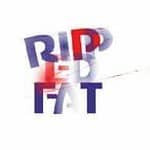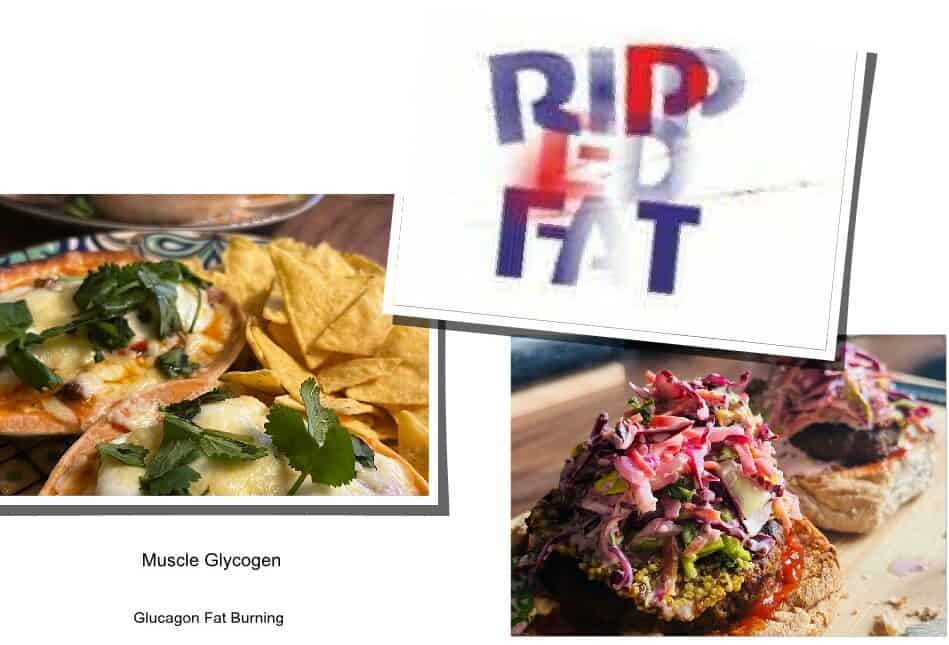RIPPEDFAT

Protein And Fiber
Sources In Diet
Insulin Management For Losing Weight
Insulin Hormone
Fiber Complex Carbs
Make Insulin Sugar Zero + – % =
Insulin Management For Losing Weight
Insulin management for weight loss. Insulin, a hormone produced by the pancreas, is essential for energy metabolism, blood sugar regulation, and weight loss facilitation. Effective weight loss requires our cells to burn stored fat, which happens when insulin levels are low.
They must also absorb glucose when there’s an excess of blood sugar in the body not used for energy. This necessitates limiting the production of liver fat that the pancreas exposes to insulin, which increases insulin levels and directs glucose to the liver and fat cells, where it’s stored as fat (glycogen).
Insulin regulates hormone glucose metabolsim blood sugar levels. Excessive sugar in the bloodstream can lead to fatigue, lack of focus, weight gain, slowed metabolism, and increased hunger cravings.
High blood sugar can also trigger hyperglycaemic symptoms, which are particularly serious for individuals with diabetes if left untreated. Additionally, diabetics may experience insulin resistance, which affects fat metabolism due to poor cellular response to insulin.
Fiber Foods In Diet
From a weight management perspective, insulin is the key regulator of both weight loss and gain. Therefore, it’s crucial to limit sugar intake, as it contributes to fat and carbohydrate accumulation. A diet higher in protein, fat, and fiber (complex carbs), low in sugar carbohydrates, can accelerate fat burning through insulin control for losing weight, also by expending energy throughout the day leads to faster weight loss.
Stop The Sugar Glut
Observing individuals with excessive belly fat may indicate high insulin levels. Elevated insulin can lead to weight gain as excess glucose is stored as fat. Conversely, weight loss occurs when insulin levels decrease. This process begins when glucagon, another hormone produced by the pancreas, is activated.
Unlike insulin, glucagon mobilizes stored fat, converting it back into glucose when blood sugar is low. Glucagon, a hormone that promotes fat burning, helps reintroduce glucose into the bloodstream for immediate energy and facilitates the breakdown of stored fat, potentially leading to muscle growth.
Persistently high insulin levels in the liver and muscle cells, manifesting as stored fat, can slow metabolism and hinder fat burning, causing the body to burn sugar instead. This can result in a cyclical pattern of weight gain similar to yo-yo dieting.
To break this cycle and promote weight loss, it is advisable to avoid refined, processed carbohydrates that rapidly convert to glucose. Instead, focusing on dietary changes of more protein fat and fiber, that boost metabolism can help reduce body fat more effectively.
Fiber Sources In Diet
Insulin Management
For Losing Weight
Healthy Eating
Protein And Fiber
Together
Fat burning and fat loss are not identical; burning fat is a metabolic process that uses energy from food, whereas fat loss specifically refers to weight loss in body fat percentage. Fat loss is more a healthful goal than weight loss, which is achieved through foods you eat, strength training, and cardiovascular exercises, daily energy expenditure, which help maintain muscle mass and overall health.
This post discusses insulin control for losing weight, emphasizing the importance of preserving muscle mass when glucose levels are low. During exercise, stored glycogen from muscle and fat cells is converted back into glucose for immediate energy, allowing for optimal performance without fatigue.
Consuming high-quality carbohydrates, fats, and proteins supports muscle mass and healthy eating habits during and after physical activity. Conversely, consuming sugary carbohydrates without expending energy through exercise or strength training can lead to increased blood sugar levels, spiking insulin and hindering weight loss.
As carbohydrates break down into glucose, metabolism slows, and glucose is stored as fat. Insulin, the hormone associated with weight gain, prevents weight loss by converting consumed carbohydrates into blood sugar, then glucose, and ultimately storing it as glycogen in the liver and muscle cells. This cycle often results in difficulty losing weight and can contribute to ineffective yo-yo dieting.
When blood sugar (glucose) is stored in the liver and muscle cells, it becomes glycogen, which is stored fat. People with excessive body fat often have too much sugar stored as fat due to consuming high-sugar carbohydrates that are not used for immediate energy. This excess must be depleted from the body first because insulin must do it’s job first which is to escort excess glucose out of the blood stream into the liver and muscle cells to be converted into glycogen.
Once you grasp the concept of insulin management for losing weight you can control your insulin by avoiding hidden sugars you will have your foot on the break pedal of your body’s fat storage mechanism. It is not possible to lose fourteen pounds of fat in two weeks it is only possible to lose 2 lbs to 3 lbs of pure fat in the first weeks or so without resorting to starvation or dangerous exhaustive exercise.
Protein And Fiber Together
No More Overloading
On Glucose Fructose Sucrose
A significant portion of the weight lost from your body will be due to water retention, which results from consuming dietary foods high in sugars and starches over many years. These processed and refined foods contribute to added pounds and inches on your belly, thighs, and buttocks. The strategy is to eliminate hidden sugars from your diet for fourteen days to enhance glucose control, balance your diet, and boost your metabolic rate. These are not special diet foods; they are everyday foods devoid of hidden sugars.
Sneaky Hidden Sugars
Grows Belly Fats Bulge
Simple carbohydrates are fast release known as white foods, such as sugars fructose, sucrose, and glucose, become refined sugars when added to processed foods. These artificial sugars are often found in processed foods that have been manufactured and are considered the Lex Luther of of carbohydrate food. These products, commonly referred to as “white foods,” may also contain harmful chemicals that cause spikes in blood sugar levels, triggering insulin release. Examples of such foods include white flour, pastries, pies, cakes, packaged cereals, sweets, table sugar, syrups, soft drinks, biscuits, white toast, and more.
Glucose naturally occurs in our bloodstream, and consuming excess glucose can stimulate insulin release, which triggers energy storage and potentially leads to weight gain. In its natural form, glucose without fructose is known as starch. When processed into food, it becomes a refined starch sweetener, such as table sugar, or is used to make high-fructose syrup from corn syrup.
Incorporating fiber sources in diet consuming protein and fiber together foods can be a game-changer, eliminating the need for stringent dieting or intense physical exercise. By selecting the right combination of fats, proteins, and fiber-rich foods, you can naturally stay ahead of the sugar surge. Sugar, the arch-nemesis of metabolism akin to Lex Luthor in the world of refined and processed foods, fosters sugar addiction, which in turn exacerbates weight loss challenges and heightens the risk of heart disease, cancer, and diabetes.
Sweet As Candy
More Protein And
Fiber Together
Blood Glucose Management
For Losing Weight
 All successful diets throughout history have restricted sugar to achieve weight loss goals. Foods high in sugar are known as simple carbohydrates; they break down quickly into sugar and can be stored as fat, especially if one does not expend energy throughout the day gives to a slow metabolism. Glucose naturally occurs in our bloodstream, and consuming excess glucose can stimulate the release of insulin, which triggers energy storage and can lead to weight gain.
All successful diets throughout history have restricted sugar to achieve weight loss goals. Foods high in sugar are known as simple carbohydrates; they break down quickly into sugar and can be stored as fat, especially if one does not expend energy throughout the day gives to a slow metabolism. Glucose naturally occurs in our bloodstream, and consuming excess glucose can stimulate the release of insulin, which triggers energy storage and can lead to weight gain.
Glucose Metabolism
In its natural form, glucose without fructose is known as starch. When processed into food, it becomes a refined starch sweetener, such as table sugar or high-fructose corn syrup.
Sugar is often considered as empty calories, interchangeable with calories from starch. Sucrose, or table sugar, consists of equal parts glucose and fructose; it’s the fructose component that imparts sweetness.
Stop The Daily Drip
Feed Of Sugar
This molecule is highly desired but also linked to metabolic diseases. Sugar, although a carbohydrate, acts similarly to fat in how fructose is processed in the liver, much like glucose metabolism.
Both pathways are over burdened, which is why sugar presents a significant dilemma for omnivores; our bodies have not adapted to the current excess of sugar, and it is gradually detrimental to our health.
High fructose corn syrup (HFCS) is vilified for its synthetic nature and its impact on the obesity epidemic, yet technically, HFCS is no different from sugar.
It’s Fiber Makes It Healthy
Fruits are inherently rich in fiber, which can mitigate many of the negative effects of fructose by slowing down glucose absorption into the bloodstream and significantly reducing insulin release. The fructose in fruit constitutes the solid part, and when consumed with fiber in its natural state, as intended by nature, it offers health benefits.
On the glycemic index scale, the fiber content in fruit slows sugar absorption, leading to a smaller insulin spike. Therefore, keeping fruit in your diet is beneficial. However, sodas and fruit juices are high in sugar and can counteract efforts to improve metabolic rate and burn fat.
Stop Running On Sugar
Start Burning On Fat
When craving something sweet, we often think of biscuits, cakes, and milk chocolate, believing that fruits like peaches, pears, or bananas won’t suffice. The solution lies in finding tasty alternatives and breaking the habit of constantly reaching for sugary treats like chocolate or biscuits. It’s okay to enjoy these occasionally, but they shouldn’t be a daily necessity for a quick sugar fix when you can opt for less processed sugars.
Fiber Sources In Diet
Complex carbohydrates, which are starches that break down into glucose, are naturally found in whole, unrefined, and unprocessed foods such as whole grains, vegetables, and certain fruits. These “brown foods” digest more slowly into sugars compared to their processed counterparts, which can enhance the metabolism rate. Examples of brown foods include beans, lentils, whole grains, nuts, legumes, as well as whole fruits and vegetables that are low in sugar.
In contrast, ‘brown’ foods, or complex carbohydrates like beans, lentils, whole grains, nuts, and other legumes, digest gradually in the bloodstream. This is because they are rich in fiber, which prevents a rapid increase in insulin levels. Consequently, these foods are often referred to as slow release carbohydrate fat blocker foods owing to their high fiber content.
Slow Release Carbs
Including fiber sources in diet, especially with starchy carbohydrate foods, can slow the breakdown of sugars in the bloodstream, resulting in a more gradual insulin response. Integrating these high-fiber foods is a crucial tactic for refining insulin management and aiding weight loss. Whole, unprocessed foods such as fruits and vegetables are optimal choices. Eating slow-release carbohydrates in combination with fats and proteins may enhance fat burning and aid in achieving weight loss goals.
Best Carbs Are
Slow Release Carbs
Including unprocessed and unrefined protein and fiber together in your diet is crucial, as they are the best fiber sources in diet for both weight loss and overall health. Carbohydrates are categorized into three categories:- fiber, starch, and sugar. They are the primary source of glucose, which is used for the body’s energy. Carbohydrates influence insulin, which controls fat storage when broken down into glucose. Glucose (sugar) is shunted out of the blood stream in to the liver and muscle cells and converted into glycogen if not used as energy immediately.
Since glucose metabolism is insulin-dependent, the most effective way to burn fat is by eliminating high-sugar carbs from your diet and opting for slow-release carb fiber sources in diet. This approach can improve metabolism, reduce the body’s insulin dependency, and promote healthier fat loss when combined with increased intake of fats, proteins, and fiber.
The objective is to prevent insulin spikes by introducing more sources of fats, protein, and fiber into the diet, such as meat, fish, butter, and eggs. Including animal protein in your meals can increase the intake of antioxidants, beta-carotene, and fat-soluble vitamins A and E. Healthier fiber sources in the diet should come from both unsaturated and saturated fats found in their natural whole food state, rather than from processed or refined derivatives.
Improve Metabolic Rate
Remove Carbohydrates From Your Diet
Protein Fiber Sources In Diet
Fat Burning Hormone
Protein and fiber together with good quality fats from a variety of grass fed animal protein or organic sources of red meat fish chicken turkey containing both saturated and unsaturated fats ensures you get a good mix of the two types; unlike meat and fish plant based protein do not contain fats. Much more of the proteins we eat are plant based proteins of grains beans and vegetables giving us a good balance of fiber food In diet with moderate amounts of fats and protein foods.
This is the long term low carb journey to improve metabolism rate and lose fat loss for good, replace it with muscle and have no more weight loss yo yo diets.
In relation to protein and fats in their whole state together with fiber sources in diet do not spike insulin the hormone that makes all over body fats. Instead triggers the glucagon fat burning hormone process which targets into reserved stored fat to break down glycogen once the insulin hormone has been depleted. It is immediate energy that is triggered by glucagon which converts stored glucose from the liver and fat cells when utilizing fat as energy after and during work out exercises and daily expenditure throughout the day.
.
Life With More Bite
